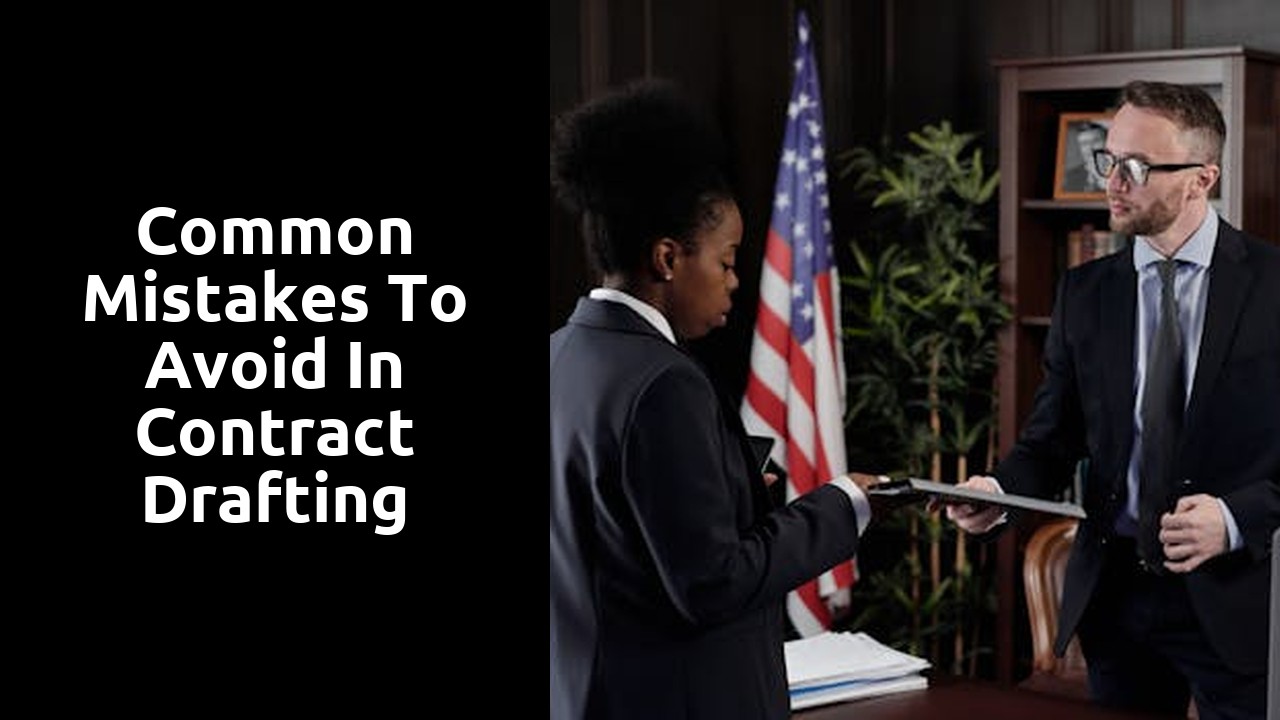 Consideration in Contract Law
Consideration in Contract Law
Costly Errors in Crafting ContractsElements of a Valid Contract
Insurance Disputes and Litigation in Business Law
Another key aspect of mastering contract drafting is anticipating and addressing potential contingencies and risks. An experienced draftsman knows how to identify potential pitfalls and proactively incorporate provisions to guard against them. This involves carefully examining the specific circumstances surrounding the agreement, the potential risks, and the parties' interests. By anticipating the various scenarios that may arise during the course of the agreement, the drafter can include appropriate safeguards, such as dispute resolution mechanisms, termination clauses, and force majeure provisions, to manage and minimize risks. Additionally, incorporating appropriate remedies and consequences for breach of contract can act as a powerful deterrent and provide the parties with a clear framework for resolving disputes.
Maximizing Contract EffectivenessRole of Commercial Solicitors in Insurance Claims
When it comes to maximizing contract effectiveness, attention to detail is crucial. Every word, phrase, and clause in a contract can have significant implications for both parties involved. Therefore, it is essential to carefully review and revise the contract to ensure it accurately reflects the intentions and expectations of all parties. This process should include a comprehensive analysis of the terms, conditions, and provisions to identify any potential inconsistencies, ambiguities, or gaps that may lead to misunderstandings or disputes later on. Furthermore, it is advisable to involve legal experts or contract drafting professionals who have a deep understanding of contract law and can provide valuable insights to strengthen the contract's effectiveness.Understanding Insurance Contracts in Business Law
Another key aspect of maximizing contract effectiveness is ensuring clarity and simplicity of language. Oftentimes, legal jargon can make contracts dense and difficult to comprehend for non-lawyers. This can lead to confusion and misunderstandings, ultimately impacting the enforceability and effectiveness of the contract. To address this, it is essential to use clear, concise, and straightforward language in the contract, avoiding excessive technical terms or convoluted sentence structures. Additionally, the use of plain English can enhance communication and promote a better understanding of the contract terms by all parties involved. By making the contract accessible and easily comprehensible, the chances of disputes arising from misinterpretation or confusion can be significantly reduced, thereby maximizing its overall effectiveness.Negotiating Insurance Policies for Business Clients
Unraveling Contractual BlundersInsurance Coverage and Risk Management for Businesses
A contract is a legally binding agreement between parties, meant to protect their interests and ensure that all parties involved fulfill their obligations. However, despite the best intentions, contractual blunders can occur, leading to costly legal disputes and financial losses. Unraveling contractual blunders requires a careful examination of common pitfalls and a proactive approach to drafting and reviewing contracts.Overview of Insurance Law for Commercial Solicitors
One common blunder is the failure to clearly define the obligations and responsibilities of each party. Ambiguity in contract language can lead to misunderstandings and disagreements down the line. It is crucial to be precise and specific when outlining the scope of work, timelines, and deliverables. Using vague or uncertain language can leave room for interpretation and create loopholes that can be exploited. By ensuring that the contract clearly states the expectations and responsibilities of all parties involved, the potential for blunders can be minimized.Competition Law and Digital Platforms: Addressing New Challenges for Businesses
Related LinksChallenging Anti-Competitive Behavior: Legal Options for Businesses
Key Considerations in Drafting a Business ContractDefending Against Competition Law Claims: Strategies for BusinessesElements of a Well-Drafted ContractCompetition Law Compliance Training: Ensuring Best Practices in Business
Strategies for Effective Contract DraftingCompetition Law Investigations: Steps for Businesses to Take
Essential Clauses for Comprehensive Contract DraftingMerger Control: Navigating the Competition Law Landscape
Drafting Contracts for International Business TransactionsProhibited Practices under Competition Law: What Businesses Need to Know
Compliance with Competition Law: Key Considerations for Businesses
Commercial Solicitors' Role in Structuring Financial Transactions
Key Legal Issues in Banking and Finance Law for Commercial Solici Importance of Legal Advice from Commercial Solicitors in Banking and Finance